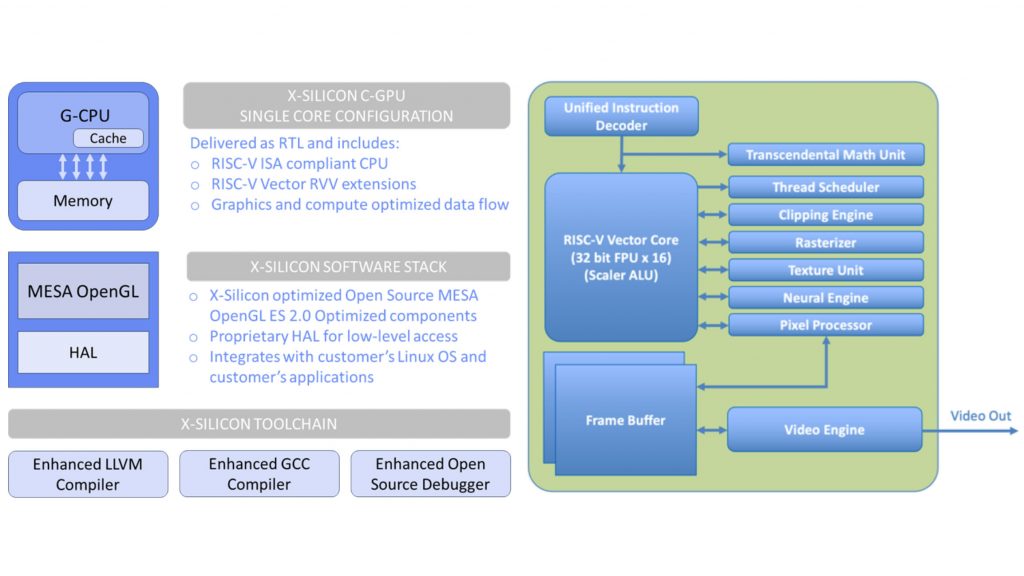
New RISC-V microprocessor can run CPU, GPU, and NPU workloads simultaneously
X-Silicon Inc. (XSi) has created a new RISC-V microprocessing chip architecture that combines a RISC-V CPU core with vector capabilities and GPU acceleration into a single chip. The CPU/GPU hybrid chip is open-standard and will reportedly be open-source as well, Jon Peddie Research reports, and it’s designed to handle a variety of different functions, including AI, which dedicated CPUs and GPUs would normally handle. The catch is that it’s supposed to do all this in a far more efficient manner.
The new CPU/GPU hybrid is designed as a “jack of all trades” processor. According to JPR, the industry has been seeking an open-standard GPU that’s flexible and scalable enough to support a variety of markets, including virtual reality, automobiles, and IoT devices. This new RISC-V CPU/GPU aims to solve this issue by providing manufacturers with a single open chip design that can handle any desired workload.
X-Silicon’s chip is unlike other architectures, as its design combines the capabilities of a CPU and GPU into a single-core architecture. This isn’t like the typical designs from Intel and AMD where there are separate CPU cores and GPU cores. Instead, the core itself is designed to handle both CPU and GPU tasks. In that sense, it sounds a bit like Intel’s abandoned Larabee project, which attempted to use x86 for graphics and other workloads.
The chip utilizes X-Silicon’s C-GPU architecture that merges GPU acceleration into a RISC-V vector CPU core. The architecture has a RISC-V vector core with a 32-bit FPU and Scaler ALU. It features a Thread Scheduler, Clipping Engine, Rasterizer, Texture Unit, Neural Engine, and Pixel Processor. The chip is intended to handle applications including AI, high-performance computing (HPC), geometry computing, as well as 2D and 3D graphics.

In theory, the ability of X-Silicon’s hybrid chip to handle CPU and GPU code in the same core affords it many advantages. The chip uses the open-standard RISC-V ISA for CPU and GPU, running a single instruction stream. This provides low-memory footprint execution and better efficiency, as there’s no copying of data between the CPU memory space and GPU memory space.
The CPU/GPU cores can be meshed together into a muti-core design, enabling manufacturers to scale up processing power as needed. In a multi-core format, multiple cores are tiled across a chip and connected using a speedy fabric. Fast on-chip SRAM or eDRAM caches are also implemented in this design, and these serve as an L2 cache that can aggregate data from multiple cores. Each core can be scheduled to run graphics, AI, video, physics, HPC, or other workloads independently of the other cores as needed.
With this design, X-Silicon’s C-GPU architecture can potentially run any type of CPU or GPU workload. X-Silicon claims to already have the Vulkan graphics API working with “fused GPU acceleration.” This should greatly help with its development and adoption on Android devices.
As the new design is based on RISC-V, anyone can utilize the architecture without having to pay instruction-set royalty fees — unlike x86 and ARM. If it works as intended, the chips could shake up the microprocessor industry. The standard designs currently used are, in theory, not as flexible or capable as what X-Silicon claims to have created.
Whether it all works as well in practice as it does on paper remains to be seen, though we might not have to wait long to find out. Software development kits will reportedly be released to early partners sometime this year.